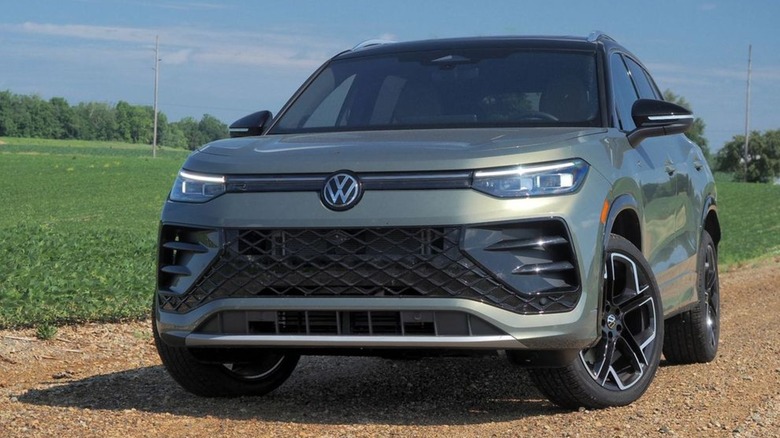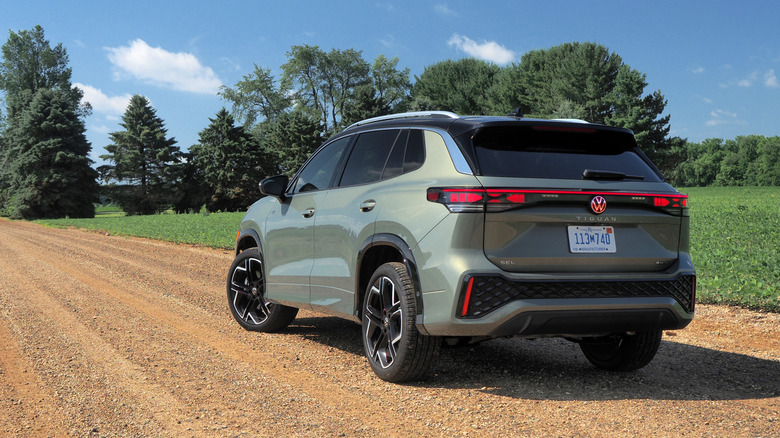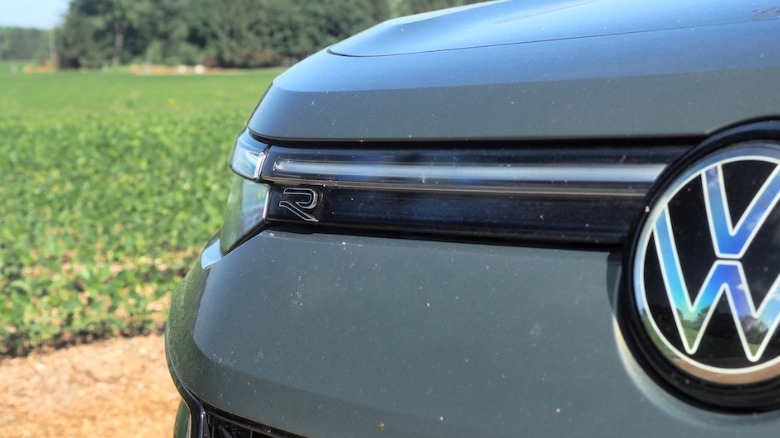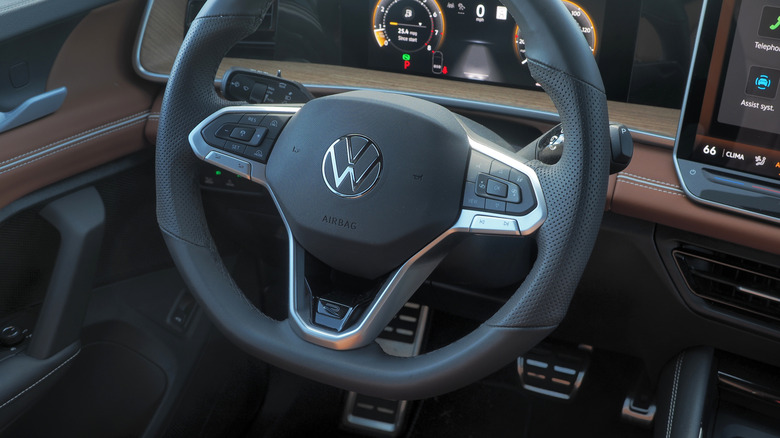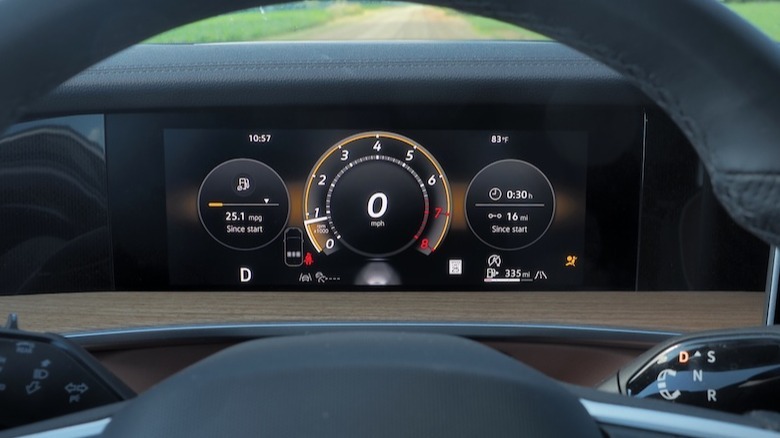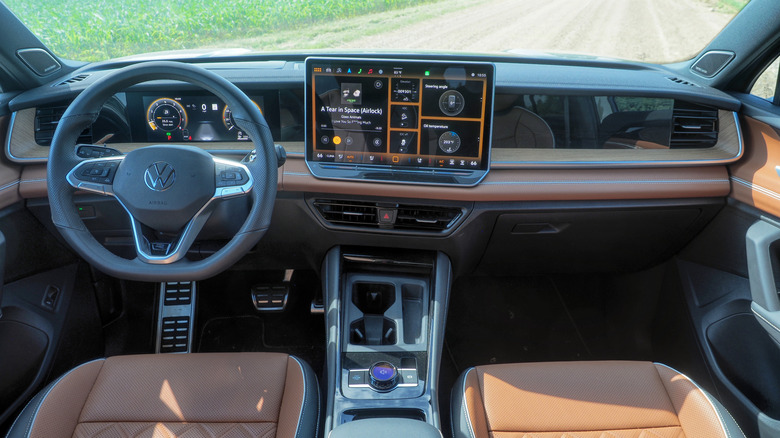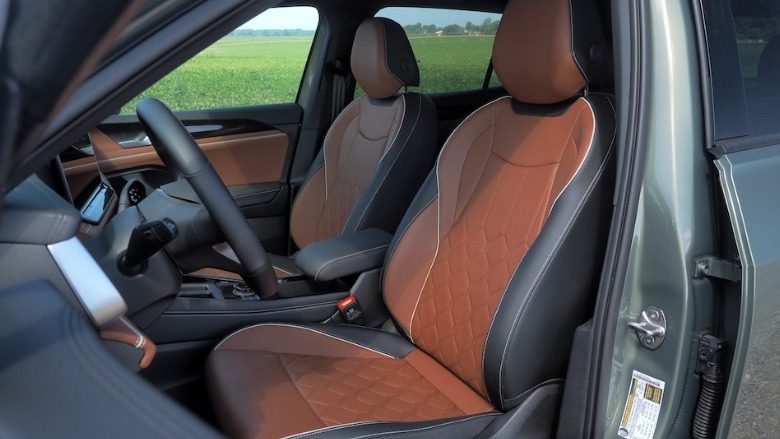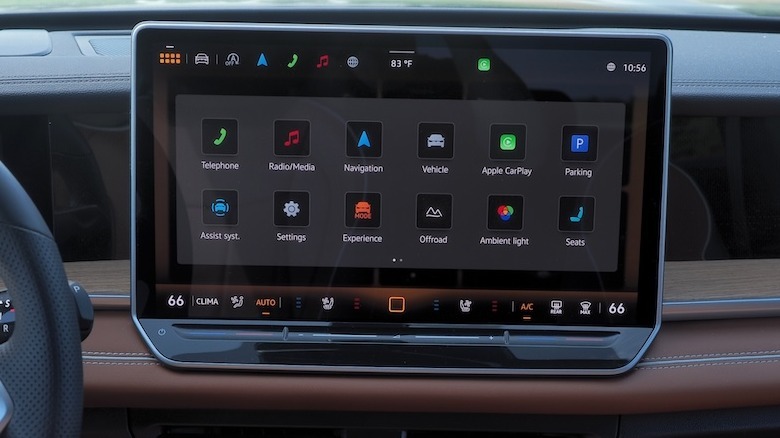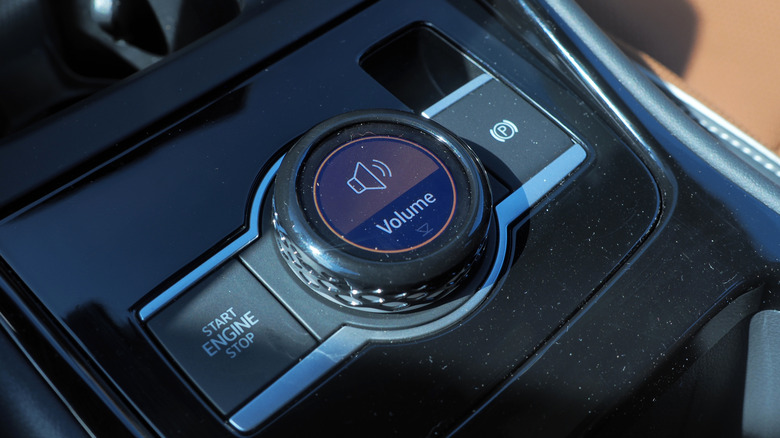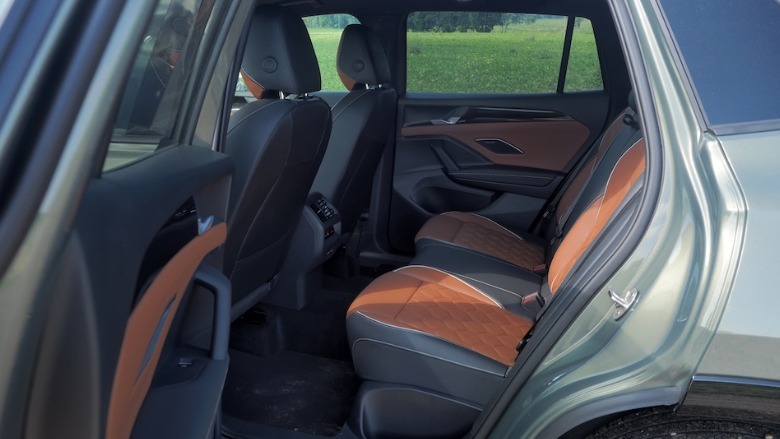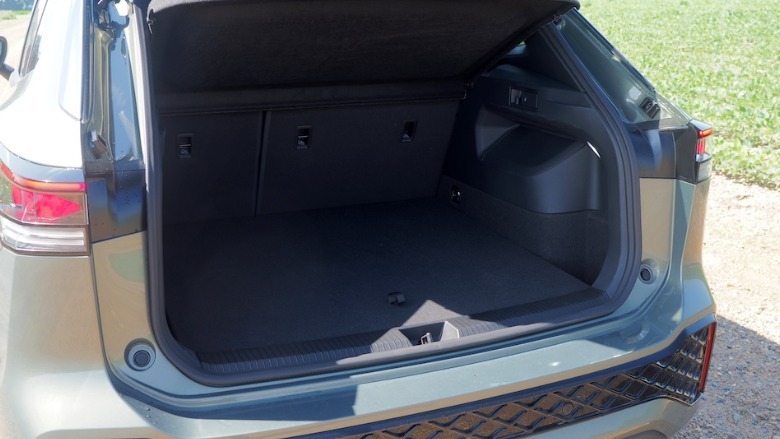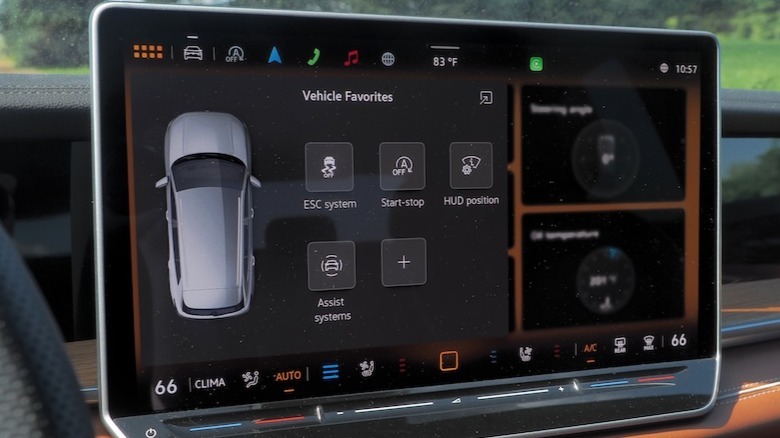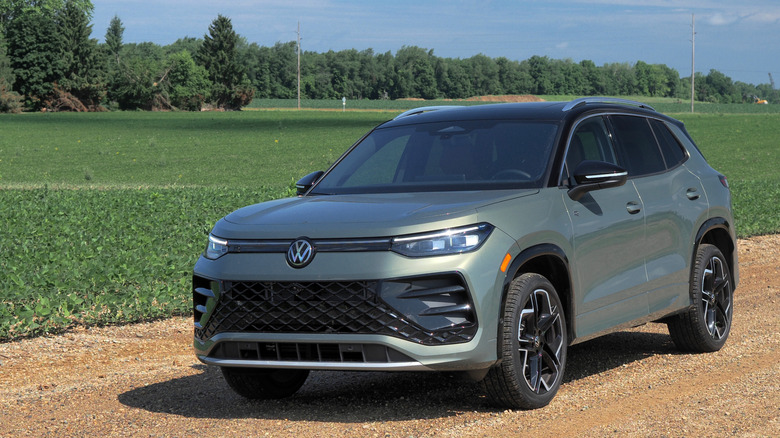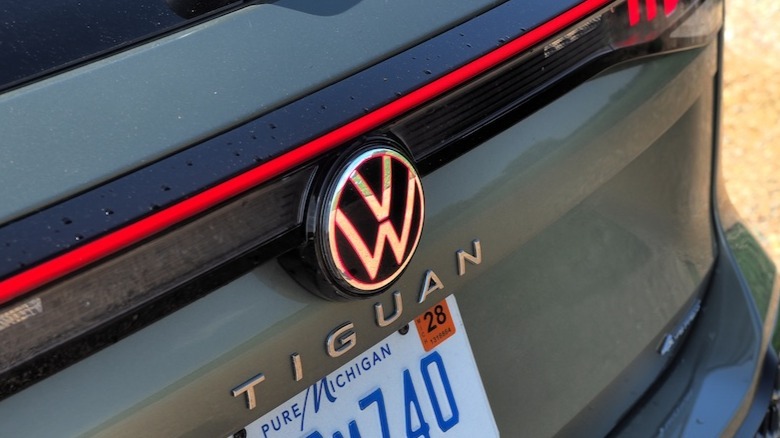2025 VW Tiguan Review: The SEL R-Line Is Great, But It's Not The One I'd Buy
You can't exactly blame Volkswagen for taking no chances with the 2025 Tiguan. As its best-selling model in the U.S. in 2024, the SUV carries no shortage of dealership success on its squared-off shoulders. For this new, third-generation Tiguan, VW has opted for refinement over risks.
Adding a little confusion, what North America calls the third-generation SUV isn't what it's known as by the rest of the world. Elsewhere, it's sold as the Tayron, and in both two- and three-row configurations. Buyers in the U.S. and Canada only have the two-row, five seat option, unlike with the previous-generation Tiguan that offered a (mighty snug) third row.
Pricing kicks off at $31,670 for the 2025 Tiguan S, with the SE landing at $34,470, the SE R-Line Black at $37,630, and finally the SEL R-Line from $41,930 (all including $1,425 destination). That pits the Tiguan right at the SUV heartland, including the perennially-popular Toyota RAV4 and Honda CR-V.
Few options to think about
It's a handsome SUV, if not as ambitious in its design as, say, VW's ID. electric series. 17-inch wheels are standard on the S, swapped for 19-inch versions on the SE; the two R-Line trims get different designs of 20-inch rims. Only the top-spec SEL R-Line has the fascia-spanning light bar and illuminated VW badge, though.
Volkswagen's color palette is a conservative thing: an array of silver, white, muted blue, and beige options, with some having contrasting black pillars. It leaves the Tiguan looking grown-up, but hardly exciting. Only the base S trim offers a choice of wheels, an 18-inch upgrade for $300.
All trims get VW's 2.0-liter turbocharged inline-four gas engine with an 8-speed automatic transmission. It pipes 201 horsepower and 207 lb-ft of torque to the front wheels or — for $1,500 more — the same horsepower but 221 lb-ft to all four wheels (the top spec SEL R-Line is all-wheel drive only). There's a solid 7-inches of ground clearance, though the Tiguan definitely feels like an SUV made for the road, not the wilderness.
Built for the road, and that's just fine
Considering the Tiguan's audience, and where they most commonly drive, that seems just fine. So too is the tuning of this familiar turbo-four, and VW's MacPherson strut front and multi-link rear suspension.
The Tiguan is compliant and easy to drive, perky around town but falling short — unsurprisingly — of being ostensibly sporty. With no adaptive dampers or similar to change things on the fly, VW has dialed in a reasonably soft ride. Twist the column-mounted shifter (shared with EVs like the ID. Buzz electric microbus) to "S" mode, and the transmission mapping is more aggressive, but we're talking minor gradations, here.
VW hasn't even bothered fitting paddle shifters, a clear sign of its more cosseting emphasis in the SUV, and I can't argue with that strategy. The Tiguan feels no need to pretend to be either an off-road beast or a sports car, and it's all the more convincing for that.
A cabin glow-up
Inside, the Tiguan finally upends Volkswagen's habit of saving its darkest, dreariest materials for the cabins of its ICE models (yes, Jetta GLI, we're looking at you). Instead, the SUV gets a bright and spacious interior fit for one of the automaker's EVs. The two-tone cloth seats — with matching fabric trim on the doors and dashboard — keep things feeling light and fresh in lower trims, while by the time you reach this flagship-spec SEL R-Line there's real leather with ventilation and massage for the front seats, backlit dash panels, and color-adjustable ambient lighting.
Clearly someone informed VW that drivers expect big displays these days; I did a double-take when I saw the scale of the touchscreen in the Tiguan SEL R-Line. At 15-inches it's certainly not the largest infotainment screen out there, but it still dominates the dashboard. Lower trims get a 12.9-inch version as standard — along with a 10.25-inch digital cluster display — and honestly, I might prefer that smaller screen: the bigger one might actually be bordering on too large for how close to the driver it is.
Persistent climate control buttons run along the bottom edge — above VW's little-loved touch sensitive strips to control temperature and volume — while shortcuts run along the top. There are various home screen layouts with widgets from multimedia and navigation, through to off-road data like elevation and steering angle. Overall, there are quite a few different menus, drop-downs, shortcuts, and more: it took a little time for me to figure out where things were.
Solid specs with little to pay extra for
Ironically, the Tiguan's huge infotainment screen is potentially overshadowed by a much smaller — but very fun — display elsewhere. The volume knob in the center console is welcome not only for being a physical control, but because of its circular screen that wakes when your hand approaches. Necessary? Not really, but it's a lovely piece of tech jewelry that made me smile every time I used it.
Wireless Apple CarPlay and Android Auto are standard on every trim, along with wireless charging. SE adds leatherette to the standard heated seats, remote engine start, and a power tailgate; SEL R-Line Black throws in a panoramic sunroof, leather-wrapped steering wheel, and head-up display. The SEL R-Line has a 12-speaker Harman Kardon audio system, 360-degree camera, heated rear seats, and adds a third zone to the automatic climate control.
Space in both rows is ample, for both legroom and headroom. A solid 26.5 cu-ft of trunk space expands to 58.9 cu-ft with the rear bench folded.
A hybrid Tiguan wouldn't go amiss
The base Tiguan S — with the smallest wheels — is rated for 26 mpg in the city, 34 mpg on the highway, and 29 mpg combined; the other front-wheel drive models dip slightly from that, for a total of 28 mpg combined. Stepping up to the 4Motion all-wheel drive model nets you 22 mpg city, 30 mpg highway, and 25 mpg combined.
That, based on my own mixed driving, is entirely accurate: the AWD Tiguan showed 25 mpg on the trip computer. It leaves the Volkswagen lagging behind Honda's CR-V and Toyota's RAV4, both of which are rated at 28 mpg combined. Notably, too, both the CR-V and the RAV4 can be had with hybrid drivetrains, bumping fuel economy up further. VW, in contrast, will send you over to the ID.4 EV if you have any hope of electrification: its U.S. line-up still remains free of even gas-electric mild hybrids, never mind plug-in hybrid options.
2025 VW Tiguan Verdict
That sharp divide — ICE on the one side, EV on the other — continues to cleave Volkswagen's line-up into two very dissimilar ranges. Within that strategy, the 2025 Tiguan comes the closest so far to a model borrowing the best of both worlds. Certainly, some hybrid engine options would be appreciated, but the more refined, modern-feeling interior and unarguable convenience and familiarity of filling up at a gas station leaves the SUV with clear mass-market appeal.
Pleasant as this Tiguan SEL R-Line is, I suspect most drivers would be content with something at the more affordable end of VW's trim walk. The SE, for instance, gets the bulk of the creature comforts but starts at $34,470 all-in. Unlike my LA-based colleague so enamored with the FWD Tiguan's driving dynamics, since I live in a cold weather state I'd add the 4Motion all-wheel drive for $1,500, taking it to $35,970.
You don't get a sporty SUV for that, or one that masquerades as a Baja-ready off-roader. VW's combination of comfort, refinement, and tech feels well-selected for the road, where most mainstream crossovers find themselves. A Tiguan hybrid would be nice, but even without it this compact SUV strikes a solid balance.
